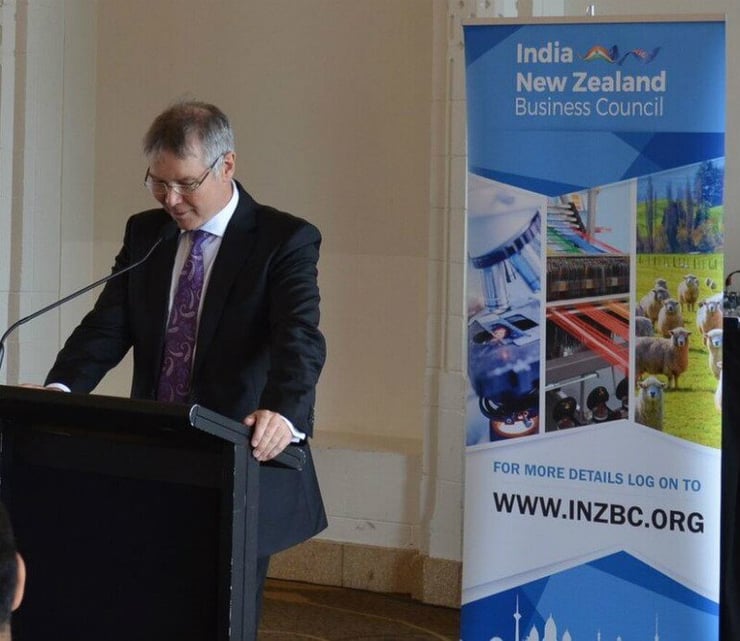Parker says RCEP deal could boost NZ-India trade

With the Free Trade Agreement between New Zealand and India remaining a non-starter even after a decade, all eyes are now on leveraging the Regional Comprehensive Economic Agreement (RCEP), which includes ten countries of the ASEAN (Association of Southeast Asian Nations) grouping, as a practical alternative.
The India New Zealand Business Council (INZBC) signed a landmark agreement with the ASEAN New Zealand Business Council at an event in Auckland on Friday.
Batting for the RCEP as the way forward and a win-win for all parties concerned was NZ Minister for Trade and Export Growth David Parker, chief guest at the jointly hosted event. (He is also Attorney General, Minister for Economic Development, the Environment, and is Associate Minister of Finance.)
Mr Parker used the term ‘pluri-lateral agreement’ to describe a trade deal that countries with a common interest would forge to benefit all parties involved, such as RCEP. As well as the ten ASEAN countries, RCEP includes New Zealand and India besides a few others.
“RCEP has the potential to be a high quality partnership agreement, mutually beneficial to India and New Zealand,” Mr Parker said.
He said Kiwis needed to be convinced that trade agreements actually work. NZ’s FTA with China is a case in point: trade volumes had touched $10billion both ways.
“RCEP is important for the future of New Zealand,” he said. “There is significant potential for New Zealand’s economic growth.”
At $2.6billion, India is New Zealand’s tenth largest trading partner. As well as trade in goods, services was also growing and has increased by two-and-a-half times than what the volumes were six years ago, Mr Parker said.
Prime Minister JacindaArdern’s recent meetings with Prime Minister NarendraModi augured well for building the relationship between the two countries, and this was a good time to “think hard and creatively” to grow trade he added.
He saw potential in New Zealand offering know how in agricultural production and logistics, boosting technological development and modernisation of systems, among other things. NZ Plant & Food Research’s stone fruit projects in the northern Indian state of Himachal Pradesh and of kiwifruit company Zespri, were examples he quoted.
“These projects are mutually beneficial for New Zealand and India not just in growing business but also reducing losses between the farmgate and the consumer,” Mr Parker said.
He said he acknowledged India’s concerns for access to New Zealand’s services sector but stopped short of suggesting any measures to address these concerns.
With just 140 New Zealand companies doing business with India and just 20 of them having a presence on the ground in India, the potential for growth is significant. Mr Parker said high tariffs on the Indian side had stifled growth and that the onus was on India for the FTA with respect to goods.
Speaking of ASEAN, he said the bloc was New Zealand’s fifth largest trading partner. He extolled the achievements of the Australia ASEAN New Zealand FTA (AANZFTA), the first comprehensive FTA signed by ASEAN, and is a major milestone for New Zealand’s trade negotiations. Since 2010, two-way trade had increased and duties had plummeted, he added.
When successfully completed, these trade agreements would result in all parties following a single set of rules creating a whopping $23trillion market.
Mr Parker said Prime Minister Ardern and New Zealand agreed with MrNarendraModi’s speech in Davos in January where he took a stand against rising protectionism among trading nations around the world. “We agree with Prime Minister Modi,” he said.
His government is a strong proponent of the Trade for All agenda. He concluded with words one would associate more with the protesting NGOs at Davos rather than a government minister: He said declining returns were going to people who had to work for a living while returns were increasing for capital. A consequence of this in New Zealand was that home ownership now was lowest in 70 years. “Some people blame trade for this,” he said.
Thought-provoking concluding remarks, those, at a time when the problem of growing inequality has the world in its tightening vice-like grip.




